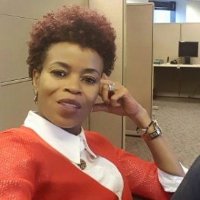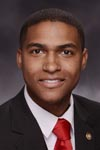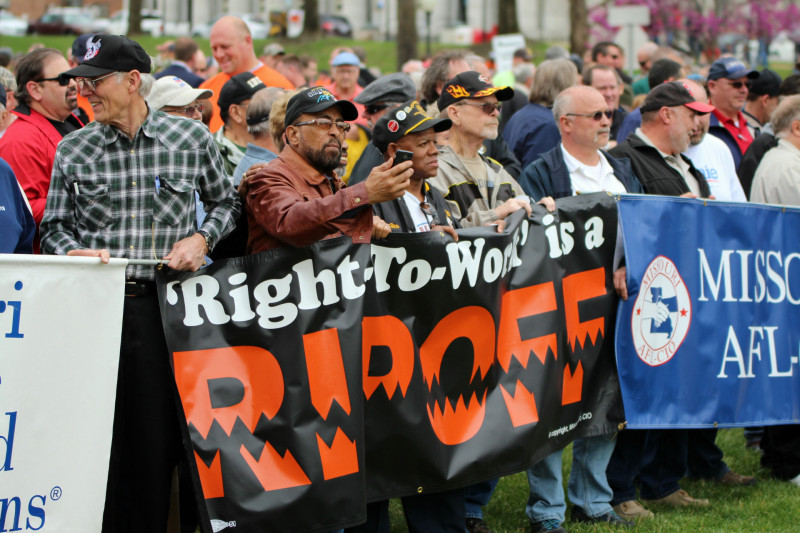ST. LOUIS – When Sen. Maria Chappelle-Nadal voted to sustain the governor’s veto of the paycheck protection bill earlier this month, she did so hesitantly. She spoke at length on the floor about the racial divisions that exist within Missouri’s labor movement, and about the personal persecution she had faced from some members of the labor community.
While the state’s AFL-CIO and other labor organizations have been working on improving racial diversity among their ranks even before Chappelle-Nadal aired her grievances, she highlighted a contrast between a union’s intent and its practices when it came to inclusion.
Still, the labor movement has made efforts, especially after the Ferguson protests, to make inclusion a top priority.

“After the death of Michael Brown, some feel [unions] had a lack of presence in the community, and it opened up a whole conversation about diversity as far as labor unions are concerned,” said St. Louis Labor Council board member Sonja Gholston-Byrd.
Gholston-Byrd only became a member of that board in April, despite having served in the St. Louis labor community for years. She is the St. Louis chapter president of the Coalition of Labor Union Women (CLUW), and she now represents many of the AFL-CIO-affiliated minority groups, like the Coalition of Black Trade Unionists and the Labor Council for Latin American Advancement, with a seat at the board table.
That voice, she argues, helps the white-majority union members know how to better serve its minority members.
“A lot of times what happens when we talk about race, when it comes to minorities, we constantly interact with white people,” she said, adding that the other way around is “an interaction that does not happen on a regular basis.”
“But if white folks don’t have the opportunity to interact and have conversations, how can they truly understand what is affecting any of the other communities.”
She believes it is especially important for organized labor to take steps into those minority neighborhoods, wards and locales because unions are built off of communities.
One of those steps has been to hire Rep. Joshua Peters, D-St. Louis, as the new community outreach director with the St. Louis Labor Council (SLLC). The organization’s president Pat White says that Peters’ job will involve speaking to leaders within St. Louis’ African-American community and organizing meetings between pastors, civil rights leaders and others with members of the labor movement. Peters will also represent the Labor Council in the black community.
“He’ll be getting into doors normally that we haven’t been able to get into in the past,” White said. “Not because they haven’t let us in. It’s because we haven’t tried.”

For example, Peters and White met Tuesday morning with a national leader from the AFL-CIO and members of the Organization for Black Struggle, a group committed to furthering the rights of African-Americans and other minorities.
Those kinds of meetings are exactly what White wants. White said Peters was an obvious choice for the position given his background as a former staffer for Congressman Lacy Clay, his educational experience graduating magna cum laude from Lincoln University, and the fact that he can communicate well with anyone and everyone.
“My first impression of him was that he could sit in a room and talk to everybody,” White said. “He’s not very controversial and it seemed to be a good fit for this job at this time because we needed someone that everyone could embrace, and it seems like Josh is one of those kinds of guys.”
That is not the only effort that White has undertaken. White also noted that he and other St. Louis labor leaders had traveled around the country learning how to get women, African-Americans and other minorities more involved in organized labor. Last October, White and Mark Esters of the CWA also wrote an editorial in the St. Louis Post-Dispatch stressing the need for diversity to address economic and social inequality.
“This pursuit necessitates that our movement be as inclusive as possible, founded on the principles of fairness, justice and family that will guide our way toward economic stability for all,” they wrote.
White hopes that these moves along with others in the future will help the labor movement become less homogeneous, while Gholston-Byrd is hopeful that the greater focus on diversity will allow the organized labor movement to truly unity and “come together, work together and be equally represented.”



